Farm Truck
Group Members
Noah Ross – Lafayette College (Class of 2026) – Electrical and Computer Engineering Major
Liz Heinemann – Lafayette College (Class of 2026)- Chemical Engineering Major
Spencer Adams – Lafayette College (Class of 2026) – Bioengineering Major
Ellen O’Connell – Lafayette College (class of 2026) Electrical and Computer Engineering Major
The Problem
It’s common knowledge the labor and work that farmers put into growing, harvesting, and selling their produce and goods. Local farmers can bring their goods to the farmers’ markets in hopes that people will support them by purchasing them. Farmers’ markets are not always the most efficient and effective way for farmers to show their goods to a large population of buyers. Our goal was to create a way for the goods of farmers to be seen by a greater number of prospective buyers in hopes to bring in more supportive funds, and loyal customers.
This problem was identified in our group after we took a trip to the Easton Farmers’ Market.
Many of the local farmers we spoke to identified the increased overhead of grocery stores as the primary challenge of working with grocery stores. Specifically the cost of transportation from farms to grocery stores was significant to farmers. Additionally the increased overhead of grocery stores compared to selling locally at their farm being passed on to farmers was a concern.
Persona
The people our product is specifically catered toward.
Our intended and target user for this product is a middle aged man who works on his family farm. He spends countless hours laboring on his farm to make money and provide for his family. However, it can be challenging for him to get his goods to a large number of consumers at the local farmers market.
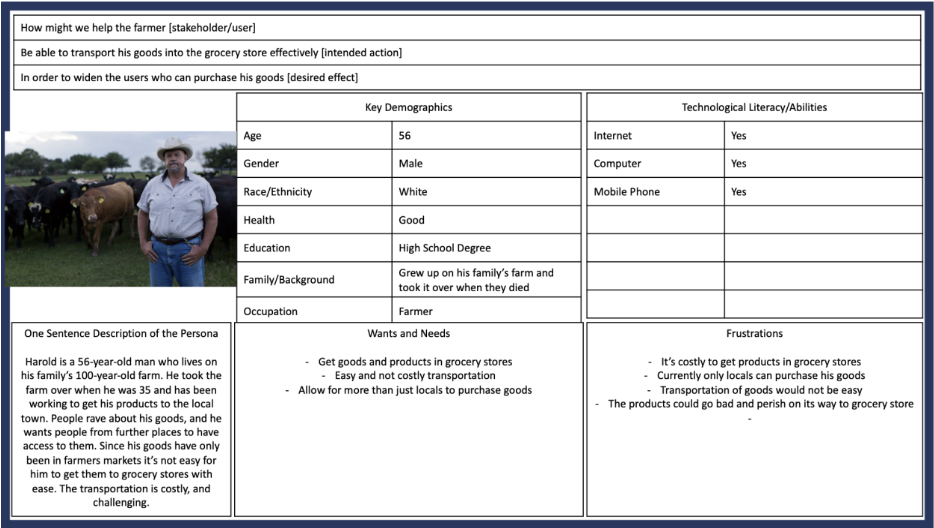
Anti-Persona
An example of a person who would have no benefit from our product because it is not catered to them in any way.
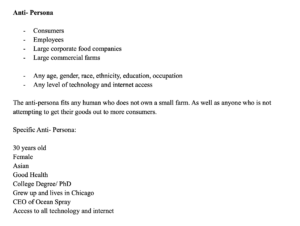
Our non-intended target could be any person who does not work on a farm, and wants their products to be seen by a large number of people. This could be a consumer, a grocery store worker, a truck driver, etc.
Functional Requirements
![]()
Brainstorming
After coming up with a number of plausible ideas for our project we used a design matrix, judging the ideas based on how they meet the functional requirements to determine which idea to pursue. The table below shows how we weighted each of the functional requirements.

The design matrix was used to narrow down our brainstormed ideas into one solution. Multiple functional requirements were considered for each idea, and they were ranked on a scale of pluses (+) and minus (-). The (highest or lowest) total number proved to be the “best” design idea.
Prototypes
We had 2 prototypes throughout the project. The first prototype was a first draft of a website, and the second was the second draft of the website fixed after the feedback received from testing.
Original Version of Farm Truck Website:
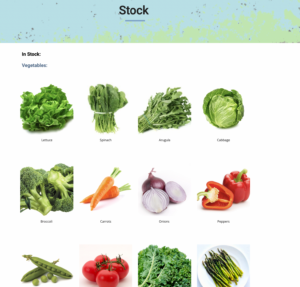
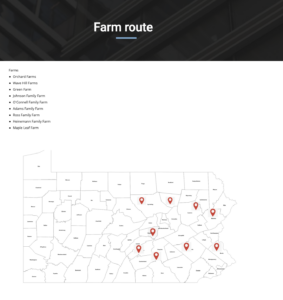
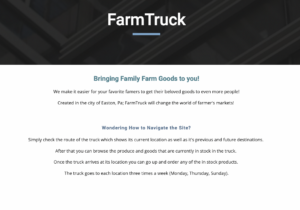
Testing
We conducted two tests on the two of our prototypes by showing our website to classmates and receiving feedback. We utilized the input about our first prototype to inform the design of our second prototype.
Current Design :
The current design of our prototype website is improved significantly from the first iteration; from the inclusion of more accessible audio dictation to a mock order form and prices. The improved design is a step closer to what a fully functioning website would look like. In addition we made changes to improve the clarity of the site and ease of use for the customers.
https://sites.google.com/lafayette.edu/farm-truck/delivery-route?authuser=0
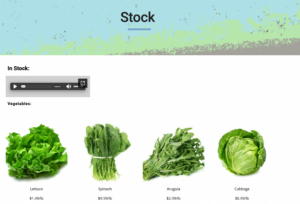
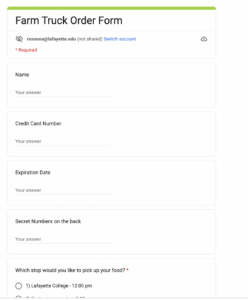
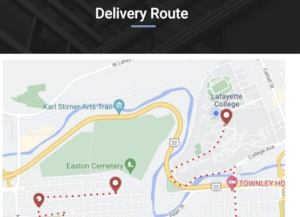
Future of Farm Truck:
If we were to expand on the farm truck concept in the future outside the environment of a project it would be interesting to prototype the concept with a higher fidelity prototype. That could take the form of either a some sort of app in addition to actually trying out the concept with real farmers and customers. Additionally we think the concept could be further improved through increased interaction with the stakeholders, in this case being the farmers.